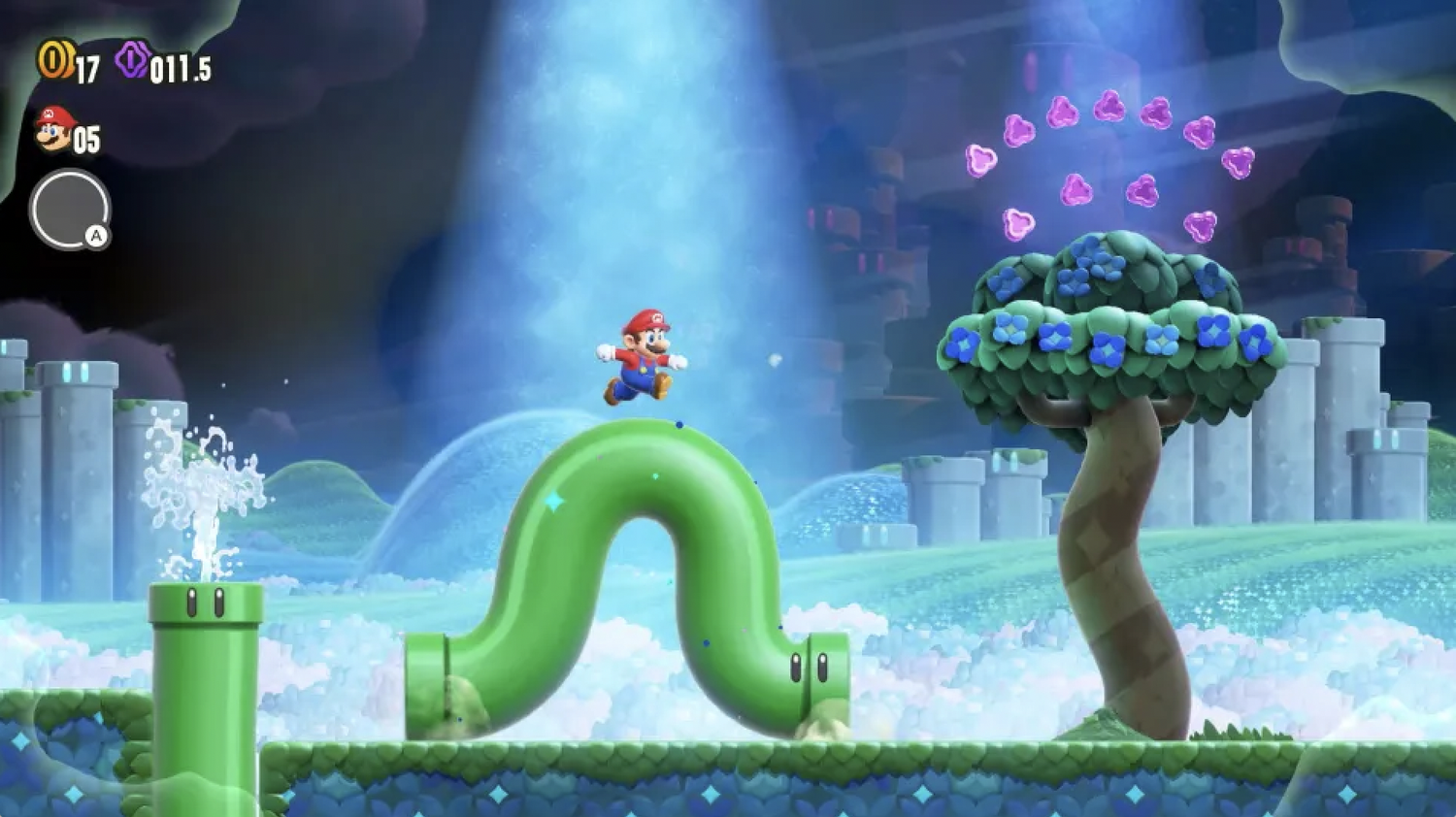
News
As Students Occupy Harvard Yard, Faculty Urge Against Police Response

News
ACLU Calls on University Presidents to Protect Protests, Free Speech in Open Letter

News
Jewish Leaders at Harvard Diverge Widely in Responses to Ongoing Pro-Palestine Encampment

News
Despite Increase in Arrests, HUPD Sees Decline in Use of Force in 2023

News
Mayor Wu Says She Respects Decision of Student Groups to Withdraw Support From Harvard Talk
‘Super Mario Bros. Wonder’ Review: A Worthy New Mario Game

Following smash hit open-world adventure “Super Mario Odyssey,” “Super Mario Bros. Wonder,” Nintendo’s first 2D Mario game made for the Switch, had a lot to live up to. Released Oct. 20, “Wonder” proved itself to be a whimsical, joyful romp for the whole family.
By getting rid of the time limit for each level and adding infinite saves, the creators of “Wonder” showed that they value exploration and creative game design over frustrating platforming. The game’s story follows Mario and his friends as they journey to the Flower Kingdom. After an attack by Bowser, the player is helped by The Prince — who is cute but not memorable due to lack of characterization — as they try to save his kingdom by collecting Wonder Seeds. Each level is populated by The Prince’s citizens, Poplins, as well as talking flowers who give hints and make entertaining comments, yet are nonetheless vaguely unsettling. All of their jokes about the environment of each level and wanting to taste everything imply that a reveal of their evilness is incoming, but they’re only supposed to be fun.
“Wonder” overall features a large cast of characters — players can play as Mario, Luigi, Peach, Daisy, Toad, or Toadette; if they even wish to be immune to taking damage — a feature largely catered towards young children — they can play as Yoshi in one of four different colors, or as Nabbit. This model means co-op play is deceptively important, as some “Search Party” levels are frustratingly difficult without a team of different characters getting their character-specific hints, but it’s certainly wonderful to not be confined to Mario.
Overall, “Wonder” is stunning, with bright colors and delightfully smooth animation. The range of textures across the different worlds and creative character animation used in conjunction with the power-ups are lovingly incorporated. But though the much-teased new Elephant power-up is exciting and functional — as the trunk can smash blocks and water flowers for coins — the costume is slightly uncanny as the character design swells to become an element and Peach and Daisy’s underwear protrude from under their skirts.
The game’s central gimmick, however, is great. Each level contains a hidden wonder flower that when found will transform the level’s appearance — from a new enemy, to changing speeds, to the enemies putting on a concert, there is no shortage of brilliant surprises to be found. Despite these fun changes, the levels most important to the story — palaces and airships where the player fights to locate and defeat an enemy to make progress — are comparably very rote, meaning that “Wonder” thrives most outside of the main story. With hidden exits and worlds galore, the game has lots of replay value, even though the main story is quite short.
“Wonder” is also significantly easier than many previous Mario games. The most difficult levels often aren’t as challenging as they might first appear, and the star rating system isn’t particularly accurate. Each course is rated in increasing difficulty from one to five stars, but there is a large variation in difficulty among the highest rated courses. Similarly, though the player is able to choose the order they explore worlds in the second half of the story, the difficulty of the levels still increases linearly, making this “choice” feel unfortunately hollow. Despite this, other aspects of the map are still fantastically thought through, as the player is given unprecedented freedom to navigate the course selection screen, and the ability to move the playable character all around the course selection map is unprecedented and downright joyful.
Similarly, the badges — a collectible feature that the player can choose one of to turn on for each level — are underutilized. The “dolphin kick” badge that allows the player to move with additional speed underwater is a no-brainer for water levels, but other badges like “floating high jump” and “boosting spin jump” are functionally the same. Despite some redundancy, the mechanic is still quite clever, letting players choose how they would like to be helped through a particular level, or challenging themselves to use a particular new ability.
Chock full of references to other Mario games as well as cleverly self-referential throughout, “Wonder” is a game packed with detail and delightful surprises, fun to play alone or in groups, and a deserved new installment in the Mario franchise.
—Staff writer Millie Mae Healy can be reached at milliemae.healy@thecrimson.com.
Want to keep up with breaking news? Subscribe to our email newsletter.
